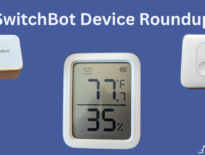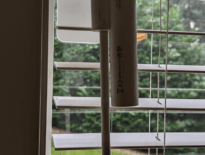
This page contains affiliate links. If you purchase an item using an affiliate link I will receive a small commission at no cost to you. Affiliates do not influence my recommendations. Read my disclosures for more information.
Small form factor desktops, also known as mini PCs, have become increasingly popular in recent years as an alternative to traditional tower computer desktops. These compact devices offer many benefits that make them a preferred choice for both personal and professional use. In this article, we will explore the reasons why I prefer small form factor desktops over traditional tower computer desktops.
Some background…
My home lab servers have transitioned from being towers to small form factor machines. I use a Qotom Mini PC as the hardware for my pfSense router and it has performed admirably for a couple of years. All of my servers run on two Proxmox-powered mini PCs; an older Intel NUC machine and a newer ASUS PN63-S1. I also recommend mini PC hardware options for the Home Assistant smart home hub.
My home lab mini PCs
I’ve gotten very comfortable with small form factor PCs for my home lab. I currently have a System76 tower system for my primary desktop. But when I replace it, it will be replaced with a small form factor desktop for the reasons below.
Small form factor pcs are… small
One of the main advantages of small form factor desktops is their size. These compact devices take up less space on a desk or table, making them ideal for use in small offices or home environments where space is at a premium. They are also easier to transport, making them a convenient choice for those who need to take their computer with them when they travel.
Energy efficiency
Another benefit of small form factor desktops is their energy efficiency. These devices use less power than traditional tower computers, which means they are cheaper to run and have a smaller carbon footprint. Many of them use mobile processors designed for efficiency. This is particularly important for individuals and businesses that are looking to reduce their energy costs and become more environmentally friendly.
In fact, my employer primarily deploys Intel NUCs for our employees and in our computer labs.
Cost savings
In addition to their size and energy efficiency, small form factor desktops are also generally more affordable than traditional tower computers. This is because they use smaller components and have fewer hardware options, which helps to reduce the overall cost of the device. This makes them an attractive choice for those who are on a budget or who do not need the latest and greatest hardware.
Upgradeability
Small form factor desktops are often easier to maintain than traditional tower computers. The compact size of these devices makes it easier to access the internal components, which means that upgrading or repairing them is often straightforward. This is particularly useful for those who are not comfortable working with computer hardware, as it makes it easier to make changes or fix any issues that may arise.
Upgrade limitations used to be a big reason why I shied away from small form factor PCs. They didn’t have enough space and connections for adding additional NICs, hard drives, and other peripherals.
But these days, I use a NAS for most of my storage. Also, you can add a lot of storage using small SSDs and even smaller NVMe M.2 SSD drives.
Also, USB interfaces have gotten extremely fast. This allows for a plethora of peripherals for expansion.
Versatility
Another advantage of small form factor desktops is their versatility. These devices are available in a range of sizes and configurations, which means that they can be tailored to meet the specific needs of the user. For example, some mini PCs are designed for use as media centers, while others are more suitable for use as office computers. This makes them a flexible and adaptable choice for a wide range of users.
Small form factor desktops also offer a range of connectivity options. Many of these devices come equipped with a range of ports, including USB, HDMI, and Ethernet, which makes it easy to connect to a variety of external devices. This is particularly useful for those who need to connect their computer to a monitor, printer, or other peripherals.
Plenty of performance
One of the key benefits of small form factor desktops is their performance. These compact devices are powered by a range of processors, including Intel and AMD, which means that they are capable of handling a wide range of tasks. As I mentioned earlier, they are also available with many storage options, including hard drives and solid-state drives, which allows users to choose the type of storage that best meets their needs.
Processors have become so powerful these days that you can even find powerful processors in small form factor PCs.
Final thoughts
Overall, small form factor desktops offer a range of benefits that make them a preferred choice over traditional tower computer desktops. They are compact and energy efficient, making them ideal for use in small offices and homes. They are also more affordable and easier to upgrade and maintain than traditional tower computers. Additionally, their versatility and connectivity options make them a flexible and adaptable choice for a wide range of users, and their performance makes them capable of handling a wide range of tasks. Overall, small form factor desktops are a convenient and cost-effective choice for those who are looking for a compact and powerful computer. And that last sentence describes me when I look for my next desktop.
Do you use a mini PC as your desktop? Why or why not? Let me know in the comments or on Twitter.
Interested in supporting HomeTechHacker?
Have you found the content on this site useful? If so, are you interested in supporting me and this site? There’s no obligation of course, but I would really appreciate any support you can give. Below are a few ways you can show support:
- Share this site with your friends and on social media (use the sharing links at the end of this page for your convenience)
- Subscribe to this site
- Purchase one of my books, The Personal Cybersecurity Manual, The Home Network Manual or The Smart Home Manual, for yourself or as a gift
- Put a link to HomeTechHacker on a site you have access to. Be sure to let me know about it!
- Enroll in HomeTechHacker Academy for free and premium online home technology courses.
- Reach out to me via my contact page or Twitter and let me know something I should write about
- Shop at Amazon through my affiliate links and ads on these pages. See my disclosures for more details about affiliate links. You can also just shop from one of the links below:
- HomeTechHacker Shop: This is a listing of products that I use, have reviewed, and that I recommend
- HomeTechHacker Technology Advisor: This suite of tools will give you customized home technology product recommendations based on your needs
- My Amazon affiliate link: Just click on this link to go to Amazon and shop
Thank you! I really appreciate it!





